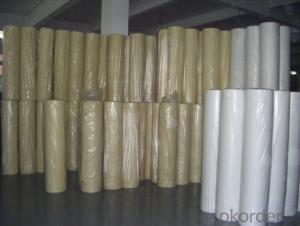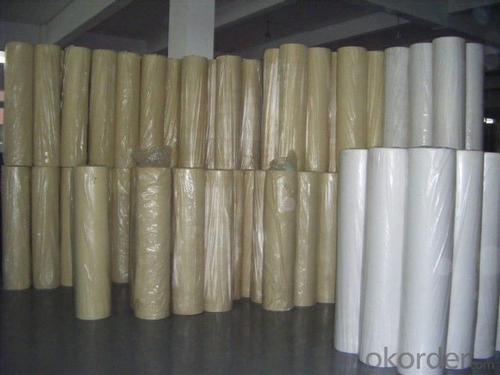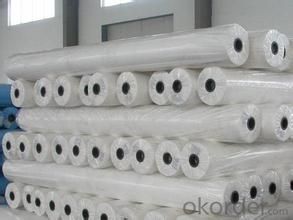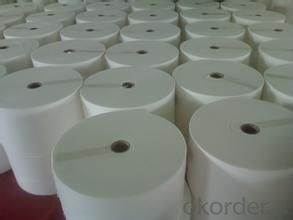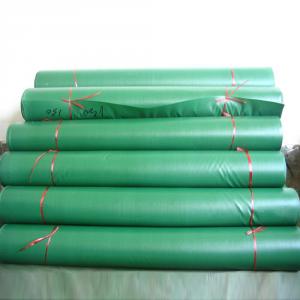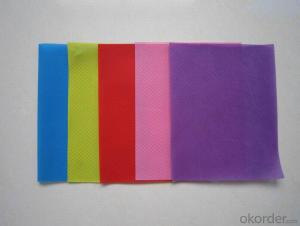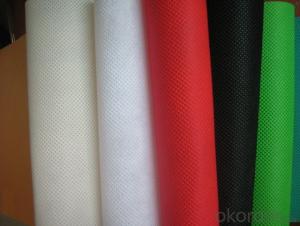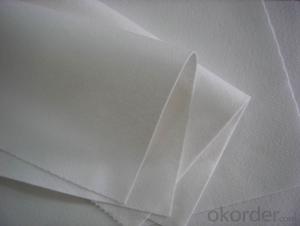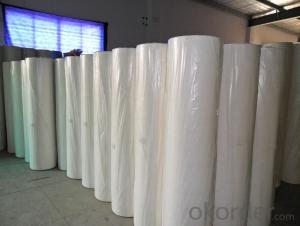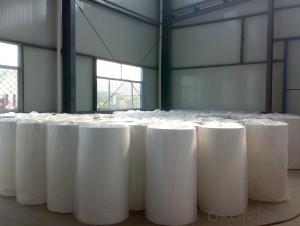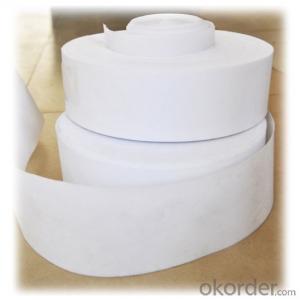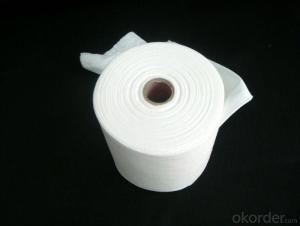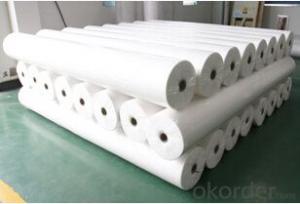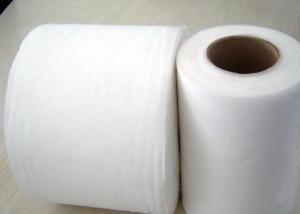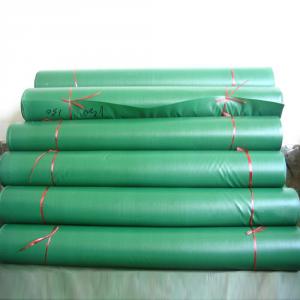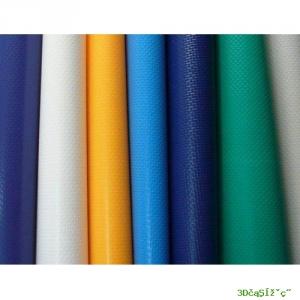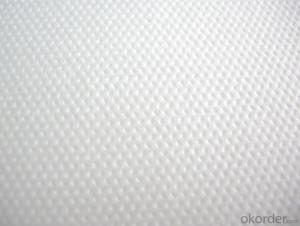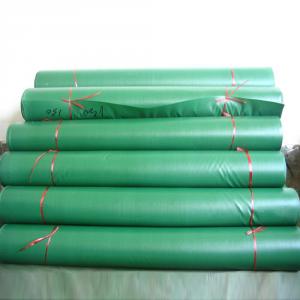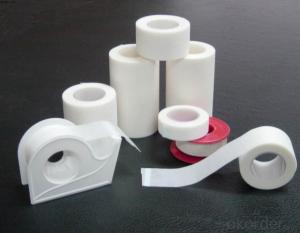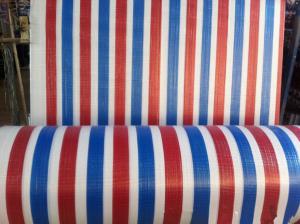Cheap Super Absorbent Non-Woven Fabric, PP Non Woven Fabric, PP Nonwoven Fabric
- Loading Port:
- Shanghai
- Payment Terms:
- TT or LC
- Min Order Qty:
- 1000 roll
- Supply Capability:
- 10000 roll/month
OKorder Service Pledge
OKorder Financial Service
You Might Also Like
The use of landscaping fabrics has become extremely popular in recent years for many reasons:
1. Leisure time is maximised - the need for weeding and on-going maintenance is minimised
2. Environmentally friendly - no need for chemical based weed killers
3. Promotes healthier plants - it allows the soil to breath and water to permeate
We offer different types of weed control fabrics to suit all applications and budgets.
1. Available in a range of sizes & materials to suit various applications from small to large landscaping projects, in both commercial and domestic situations.
2. All our landscape fabrics are UV stabilised
3. Ideal for use under paths, patios, decking, paving, bark mulch, gravel etc.
FEATURES:
1. Weed suppressant and drainage control landscaping fabric
2. Spun bonded non-woven fabric – will not fray when cut
3. Easy to use
4. Environmentally friendly
5. Allows water, air and nutrients through, suppressing weeds without the use of chemicals
6. Good alternative to Plantex® where cost is a factor
7. UV Stabilised
8. Reduces the level of watering required due to the slower rate of water evaporation
FUNCTION:
1. Cover crops in the ground surface,prevent weeds and against the insect
2. Controlling soil humidity and the temperature
3. Does not affect the growth of the crops
4. Protects plants from harmfully solar radiation
5. Air permeability, water permeability help crops growth.
6. Mothproof, eco-friendly, breathable, anti-bacteria, tear-resistant, fusible
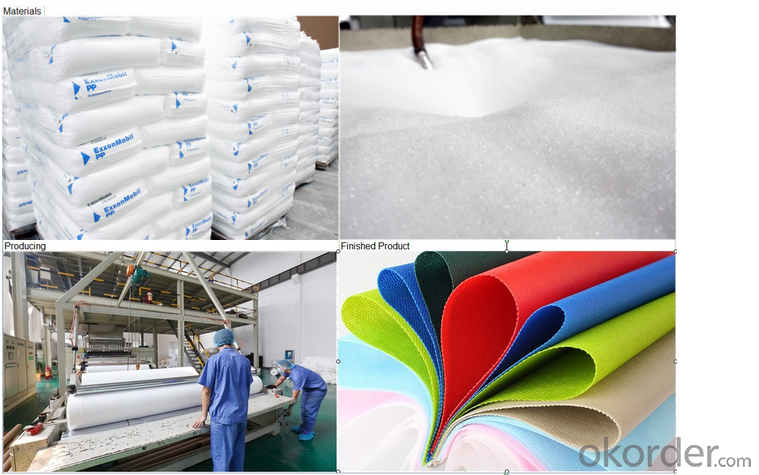
Furniture Upholstery
Roofing and Tile Underlayment
Acoustical Ceilings
Insulation
House wrap
Pipe wrap
Sofa and Mattress Lining
Shoes & Garments
Coveralls
Pillow cases
Airline Headrests
Interlinings
Clothing and Glove insulation
Bra and Shoulder Padding
ADVANTAGES:
1. Lower labour costs as no weeding maintenance for years;
2. Water seeps through and can conserve soil moisture for improved growing conditions;
3. Air escapes – humidity rises through the mat for a more controlled growing environment;
4. Increase crop yields close to 25% due to improved growing conditions and absence of water stress and competition of nutrients absorption from weeds;
5. Minimises bacteria and fungus problems especially Algae;
6. Strong, woven construction or pressed fibre sheet resists tears and punctures;
7. Resistant to mildew, rot, water, sunlight and most of the agricultural chemicals
8. Fertilizer is applied on the mat, thus helping the owner or estate manager to monitor the progress of manuring;
9. Prevents soil erosion or leaching of soil nutrients or fertilizers applied;
10. Environmental friendly.
FAQ:
Q .What is the material of the non woven fabric ?
A .PP spunbond non woven fabric
Grade A: 100% Polypropylene
Grade B: 90% Polypropylene +10% filling
Q .What about the width of the non woven fabric ?
A .We can cut the fabric as your requirement. Our width of machine is 240cm, so the max of the width is 240cm
Q .What about the color ?
A .Any color is available. You just need to give me the Panton Num or send me your sample. Then we will make the color samples to you for approve
Q .What about the GSM ?
A .The thinnest of the fabric that we can produce is 9g, and the thickest is 250g. Normally the fabric that used in bag making is 50-100g, the agricultural used is 17-50g, the home used fabric is 40g and so on...
Q .What about the delivery time ?
A .We can finish the production in 2-3 days (40ft HQ)
Q .What about the price ?
A .We are the factory of the PP nonwoven fabric, We can supply you with good quality and favorable price
- Q: What is the difference between the nonwovens industry and the textile industry?
- To know the difference between the nonwovens and the textile industry, first look at the difference between nonwovens and textiles
- Q: What is the step in the textile fabric
- With the words and deeds, the attitude represents the company, so with the business units to deal with the corresponding business process, we must grasp the basic principles, pay attention to words and deeds, attitude neither overbearing nor humble. It is strictly forbidden to have any excitement to the client (or the customer's merchandiser) for any subjective or objective reasons. Processing business process can not arbitrarily overweight position, there are problems in time to ask the company to decide.
- Q: Clothing and processing and processing into what auxiliaries
- Textile processing used a lot of additives, spinning from the spinning machine will be used, and then to the weaving, weaving need to sizing the sizing, sizing will also use a variety of additives to increase serous duct toughness
- Q: What is the meaning of the number of yarns used in cotton textiles?
- When the fibers are spun into yarn, they can be woven into a fabric. Because the weaving machine used in the principle of the machine is different, weaving the fabric of the internal structure is different. Usually can be divided into two categories of woven and knitted.
- Q: Application of Biological Enzyme in Textile Processing
- Hemicellulase, ligninase in the textile processing applications: natural cellulose fibers contain hemicellulose and lignin, especially linen fiber content is high, do not remove hemicellulose and lignin
- Q: What is the earliest textile tool?
- Pre-Qin's textile has been liberated from the "hand refers to the hook". ("Yellow Emperor" and "Huainanzi" records "hand refers to the hook" refers to a root yarn in turn connected to the same root on the stick, the other end is followed by another stick in the above
- Q: From the yarn to the finished textile fabric production process is how
- Fabric mercerizing: refers to the cotton fabric in the case of tension, after the treatment of concentrated caustic soda, so that fabric gloss better, more crisp, better shape. Commonly known as double mercerizing fabric complete process: cotton spinning → combing → yarn singeing → yarn mercerizing → yarn twisted → fixed color, soft, twisted after the formation of mercerized cotton yarn → yarn forming the fabric → fabric dyeing (if the early yarn is not dyed) → fabric mercerizing → fabric pre-shrink, stereotypes → the formation of double mercerized cotton fabric, cloth can be clothing
- Q: What causes the loss of textile enterprises
- Roughly three points, each of the textile industry has its own characteristics, including the cost, including sales channels
- Q: What is the earliest textile raw material?
- China as early as the Neolithic Age has mastered the textile technology, ancient Chinese silk spinning textile technology, has reached a very high level, renowned in the world
- Q: What is the use of polyurethane TPU hot melt adhesives in textiles?
- Lining the general requirements of the hot melt adhesive is colorless and tasteless, soft texture, fast bonding, resistance to dry and wet wash, glue can not affect the fabric, resistant to light and so on. Various types of hot melt adhesives can be used with a wide range of hot melt adhesives. Most of them are ethylene-vinyl acetate (EVA) hot melt adhesives, polyamide hot melt adhesives and high pressure polyethylene (HDPE) heat Melt powder, and different uses of hot melt adhesive and processing methods are also different.
Send your message to us
Cheap Super Absorbent Non-Woven Fabric, PP Non Woven Fabric, PP Nonwoven Fabric
- Loading Port:
- Shanghai
- Payment Terms:
- TT or LC
- Min Order Qty:
- 1000 roll
- Supply Capability:
- 10000 roll/month
OKorder Service Pledge
OKorder Financial Service
Similar products
Hot products
Hot Searches
Related keywords
